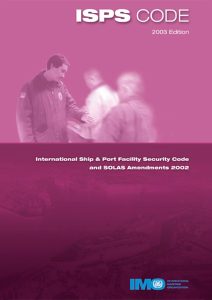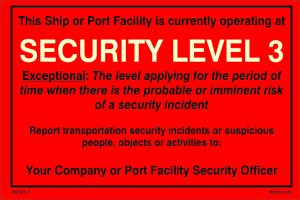In the wake of rising global security concerns, particularly those related to maritime activities, the International Ship and Port Facility Security (ISPS) Code stands as a pivotal framework established to safeguard ports and ships against security threats. The code was adopted by the International Maritime Organization (IMO) in December 2002, in response to the 9/11 attacks, as an amendment to the Safety of Life at Sea (SOLAS) Convention. It specifically focuses on the security of port facilities and ships, providing a standardized, consistent framework for evaluating risk and implementing security measures. This article delves into the core components of the ISPS Code with a particular emphasis on ports, exploring port security facilities, equipment, measures, the role of the Port Security Officer, the Port Security Plan, and the designated security levels at ports.

Port Security Facilities, Equipment, and Measures
Port security facilities encompass the infrastructure, equipment, and measures implemented to prevent unauthorized access, activities, or threats to the port and its operations. This includes fencing, surveillance cameras, lighting, access control systems, and communication equipment designed to monitor and secure the perimeter and critical areas of the port. Advanced technology, such as biometric identification systems, X-ray machines, and underwater surveillance, plays a crucial role in enhancing the detection and deterrence capabilities of port security.
Port security measures extend beyond physical equipment to encompass procedures and protocols aimed at ensuring the security of the port, its employees, and the cargo. These measures include thorough screening of incoming and outgoing cargo, security patrols, identity verification for personnel and visitors, and emergency response protocols. The comprehensive implementation of these facilities and measures is essential for maintaining a secure port environment, compliant with the ISPS Code.
The Port Security Officer (PSO)
At the helm of a port’s security efforts is the Port Security Officer (PSO), a designation mandated by the ISPS Code. The PSO bears the primary responsibility for the development, implementation, and maintenance of the Port Facility Security Plan. Their duties include conducting regular security assessments, ensuring the proficiency and readiness of security personnel, and serving as the central point of communication for security-related information between the port and ships, as well as between the port and government security agencies. The PSO must possess comprehensive knowledge of security practices, the ISPS Code, and emergency procedures to effectively oversee and enhance the port’s security posture.
The Port Security Plan
A cornerstone of a port’s adherence to the ISPS Code is the Port Facility Security Plan (PFSP). This document is meticulously crafted by the PSO and outlines the strategies, procedures, and actions designed to address various security scenarios and threats. The PFSP encompasses all aspects of port security, from physical security measures and surveillance systems to protocols for handling security incidents and breaches. It details the roles and responsibilities of all port personnel in maintaining security and outlines procedures for regular drills and training to ensure preparedness. The PFSP is a living document, regularly reviewed and updated to reflect changes in threat landscapes, operational practices, and regulatory requirements.
Security Levels at Ports
The ISPS Code establishes three security levels designed to provide a scalable response to perceived threat levels:
- Security Level 1 signifies the standard level of security measures that are in place at all times. At this level, measures are designed to prevent unauthorized access and activities under normal conditions.
- Security Level 2 is activated in response to heightened risk or specific threats to the port or ships. At this level, additional protective measures and heightened vigilance are implemented to address the elevated risk.
- Security Level 3 corresponds to a period of imminent security threat or actual attack. This level necessitates maximum security measures, possibly including the suspension of port operations or the implementation of emergency protocols designed to respond to severe security incidents.
The transition between these security levels is dictated by the national government based on intelligence and threat assessments, with ports and ships required to adjust their security measures accordingly.

Conclusion
The ISPS Code represents a critical framework for ensuring the security of ports and ships against the backdrop of evolving global threats. Through the implementation of comprehensive security facilities, equipment, measures, the pivotal role of the Port Security Officer, the development of a robust Port Security Plan, and the adaptable security levels, the ISPS Code provides a foundation for safeguarding maritime commerce and international trade. As threats continue to evolve, the continuous review and adaptation of these components are essential for maintaining a secure maritime environment.


A good article , thanks !